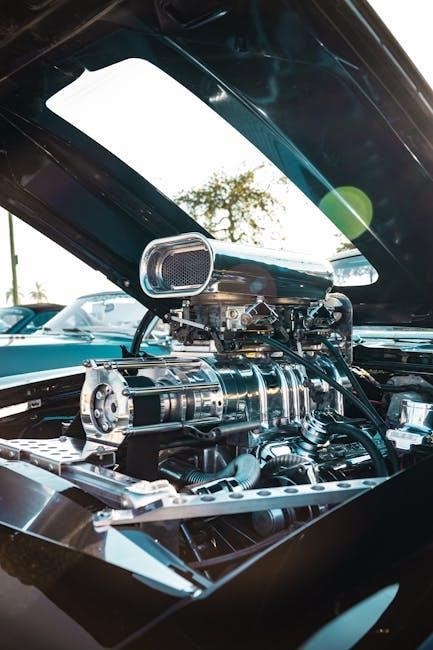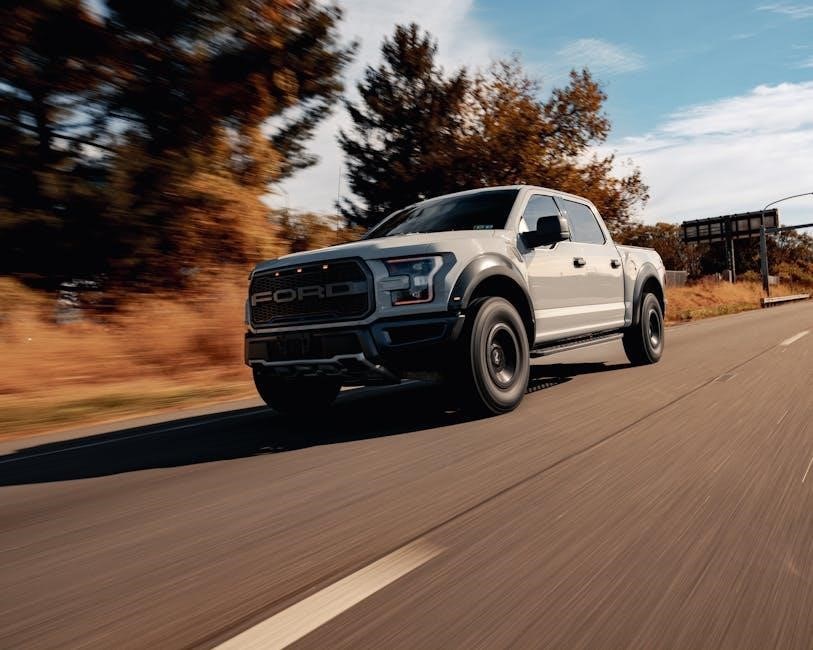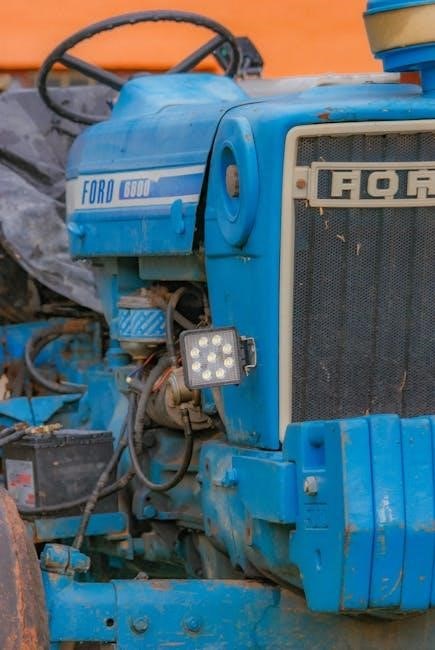The Ford 4.6 engine interchange guide provides valuable information for enthusiasts, covering various aspects of engine swapping, including compatibility and installation, with a focus on the 4.6 engine and its applications, using online resources.
Overview of the Engine Swap Process
The engine swap process involves several key steps, including planning, preparation, and execution, with a focus on ensuring compatibility and proper installation of the new engine.
According to online forums, enthusiasts have reported success with swapping the 4.6 engine into various Ford models, citing the importance of careful planning and research.
A well-documented guide can help simplify the process, providing valuable insights and tips for a successful engine swap.
By understanding the engine swap process, enthusiasts can make informed decisions and avoid common pitfalls, ultimately achieving their goal of upgrading their vehicle’s engine.
The process requires attention to detail, patience, and a willingness to learn and adapt, as well as access to specialized tools and equipment.
Online resources, such as forums and tutorials, can provide valuable guidance and support throughout the engine swap process, helping enthusiasts to overcome challenges and achieve success.
With the right approach and mindset, the engine swap process can be a rewarding and enjoyable experience, allowing enthusiasts to unlock their vehicle’s full potential and enjoy improved performance and reliability.
Overall, the engine swap process is a complex and multifaceted undertaking that requires careful consideration and planning, but with the right guidance and support, it can be a highly rewarding experience.
Understanding the Ford 4.6 Engine
The Ford 4.6 engine is a V8 engine with a displacement of 4.6 liters, featuring a range of innovative technologies and designs, using online resources for detailed information and specifications always.
Key Features and Benefits of the 4.6 Engine
The 4.6 engine has several key features, including its overhead cam design and aluminum cylinder block, which provide improved performance and fuel efficiency. The engine also features a range of advanced technologies, such as variable cam timing and a dual-plenum intake manifold. These features work together to provide a smooth and responsive driving experience, making the 4.6 engine a popular choice for enthusiasts. In addition to its performance benefits, the 4.6 engine is also known for its reliability and durability, with many engines lasting for hundreds of thousands of miles without major issues. Overall, the 4.6 engine offers a unique combination of performance, efficiency, and reliability, making it a great option for those looking to upgrade their vehicle. With its advanced features and proven track record, the 4.6 engine is a great choice for anyone looking to improve their driving experience. The engine’s benefits are numerous and well-documented, making it a popular choice among car enthusiasts.

Challenges of Swapping the 4.6 Engine
Swapping the 4.6 engine poses significant technical challenges and requires careful planning and execution always.
Wiring and Electrical Considerations
When swapping the 4.6 engine, wiring and electrical considerations are crucial to ensure a successful installation. The engine’s electrical system must be compatible with the vehicle’s existing wiring harness. A stand-alone wiring harness can be used to simplify the installation process. According to online resources, wiring can be a big challenge with a 6.7L and Allison swap, but fortunately, there are solutions available. Simple parts like engine mounts can take some time to fabricate, but wiring is a more complex issue. The Ford 4.6 engine interchange guide provides valuable information on wiring and electrical considerations, including diagrams and instructions for installing the engine’s electrical system. By following these guidelines, enthusiasts can ensure a safe and reliable installation. The guide also covers troubleshooting common electrical issues that may arise during the installation process. With careful planning and attention to detail, wiring and electrical considerations can be overcome.

Engine Mounts and Fabrication
Simple parts like engine mounts require custom fabrication, taking time and expertise to complete correctly online.
Simple Parts that Require Custom Fabrication
When it comes to engine swaps, simple parts like engine mounts can be a challenge to fabricate, as they require custom designs to fit the new engine. According to online forums, engine mounts are one of the most critical components that need to be custom-made to ensure a proper fit and prevent any damage to the engine or the vehicle. The process of fabricating these parts can be time-consuming and may require specialized tools and expertise. Additionally, other components like exhaust systems and wiring harnesses may also need to be custom-made to accommodate the new engine. Online resources provide valuable information and guidance on how to fabricate these parts, including tutorials and diagrams to help enthusiasts complete the job successfully. With the right skills and knowledge, custom fabrication can be a rewarding experience, allowing enthusiasts to create unique and functional parts for their engine swap projects. The internet provides a wealth of information on this topic.

Alternative Engine Options
Other Ford engines, such as the 6.4L, offer similar performance and potential for engine swaps, with online resources providing guidance on compatibility and installation, using various online forums and websites for research purposes daily.
Comparing the 4.6 Engine to Other Ford Engines
The 4.6 engine is often compared to other Ford engines, such as the 6.4L, in terms of performance and potential for engine swaps. Online forums and websites provide guidance on compatibility and installation, using various resources for research purposes. The 6.4L engine, for example, offers similar performance to the 4.6 engine, but with some differences in terms of design and functionality. Some enthusiasts prefer the 6.4L engine for its potential for modification and upgrade, while others prefer the 4.6 engine for its reliability and durability. The choice of engine ultimately depends on the individual’s needs and preferences, as well as the specific application and vehicle being used. By comparing the 4.6 engine to other Ford engines, enthusiasts can make informed decisions about which engine to use for their project, and how to optimize its performance and potential. This comparison can be useful for those looking to swap engines or upgrade their vehicle’s performance;

Vehicle Compatibility and Clearance
Clearance issues arise with certain vehicles, such as tight engine bays, using online resources for guidance on compatible vehicles and required modifications always.
Factors to Consider When Choosing a Vehicle for the Swap
When selecting a vehicle for the 4.6 engine swap, several factors must be considered to ensure a successful installation. The engine bay’s dimensions and layout play a crucial role in determining compatibility, as some vehicles have tighter spaces than others. Online resources and forums can provide valuable insights into the suitability of various vehicles for the swap. Additionally, the vehicle’s suspension and steering system may need to be modified to accommodate the new engine. The type of transmission and drivetrain used in the vehicle is also an important consideration, as it must be compatible with the 4.6 engine. By carefully evaluating these factors and using online resources for guidance, enthusiasts can choose a vehicle that is well-suited for the 4.6 engine swap, and avoid potential pitfalls and complications that can arise during the installation process, using a systematic approach to the swap.